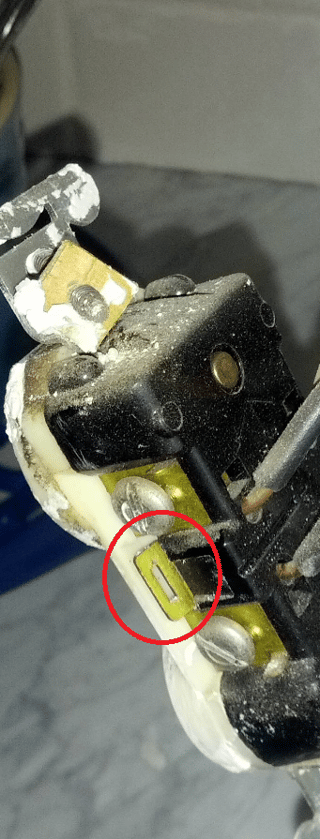There should be no problem doing what you want.
One set of conductors brings power from an upstream device or outlet, while the other takes power to a downstream device or outlet. The two black conductors are electrically bonded through the receptacle, as are the two white conductors. You'll notice that the bonding tab on the side of the receptacle is still in place, which means that the two receptacles are connected together.

Replacing with a similar receptacle
If you're simply replacing the existing receptacle, with an identical (or similar) receptacle of a different color. Simply connect the new receptacle exactly as the original is connected.
- Disconnect the power by switching off the breaker, or removing the fuse.
- Connect the bare grounding conductor to the green grounding screw terminal.
- Connect the two white conductors to the silver colored screw terminals (one per terminal).
- Connect the two black conductors to the brass colored screw terminals (one per terminal).
NOTE: When terminating conductors at a screw terminal, always wrap the conductor in a clockwise direction. This will cause the conductor to be pulled in tight, when the screw is tightened down.

Installing a new fancy device without screw terminals
I'm not sure what conductor combinations the supplied twist-on wire connectors are rated for, so I'm going to assume they're only rated for 2 #14 conductors (check the documentation). So before you start, you'll want to pick up a couple Ideal yellow twist-on wire connectors.
- Disconnect the power by switching off the breaker, or removing the fuse.
- Connect the bare grounding conductor from the circuit, to the green grounding conductor from the device using one of the supplied twist-on wire connectors.
- Connect all the white conductors using a yellow twist-on wire connector.
- Connect all the black conductors using a yellow twist-on wire connector.
Additional Information:
- If this was a ground-fault circuit interruption (GFCI) receptacle (which it is not), the procedure would be different.
- If this was a split receptacle (half switched, or both halves supplied by different circuits) (which it is not), the procedure would also be different.




